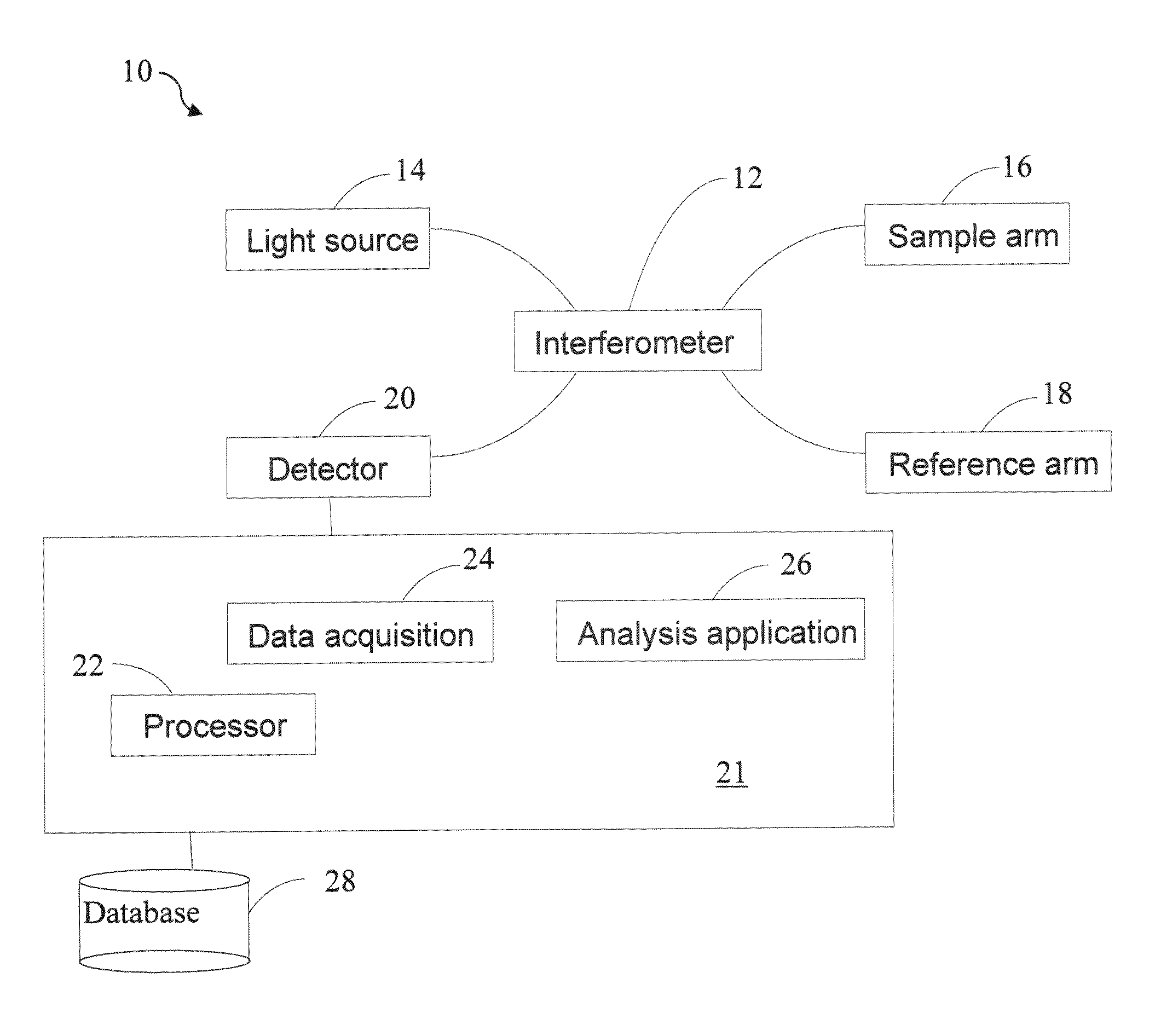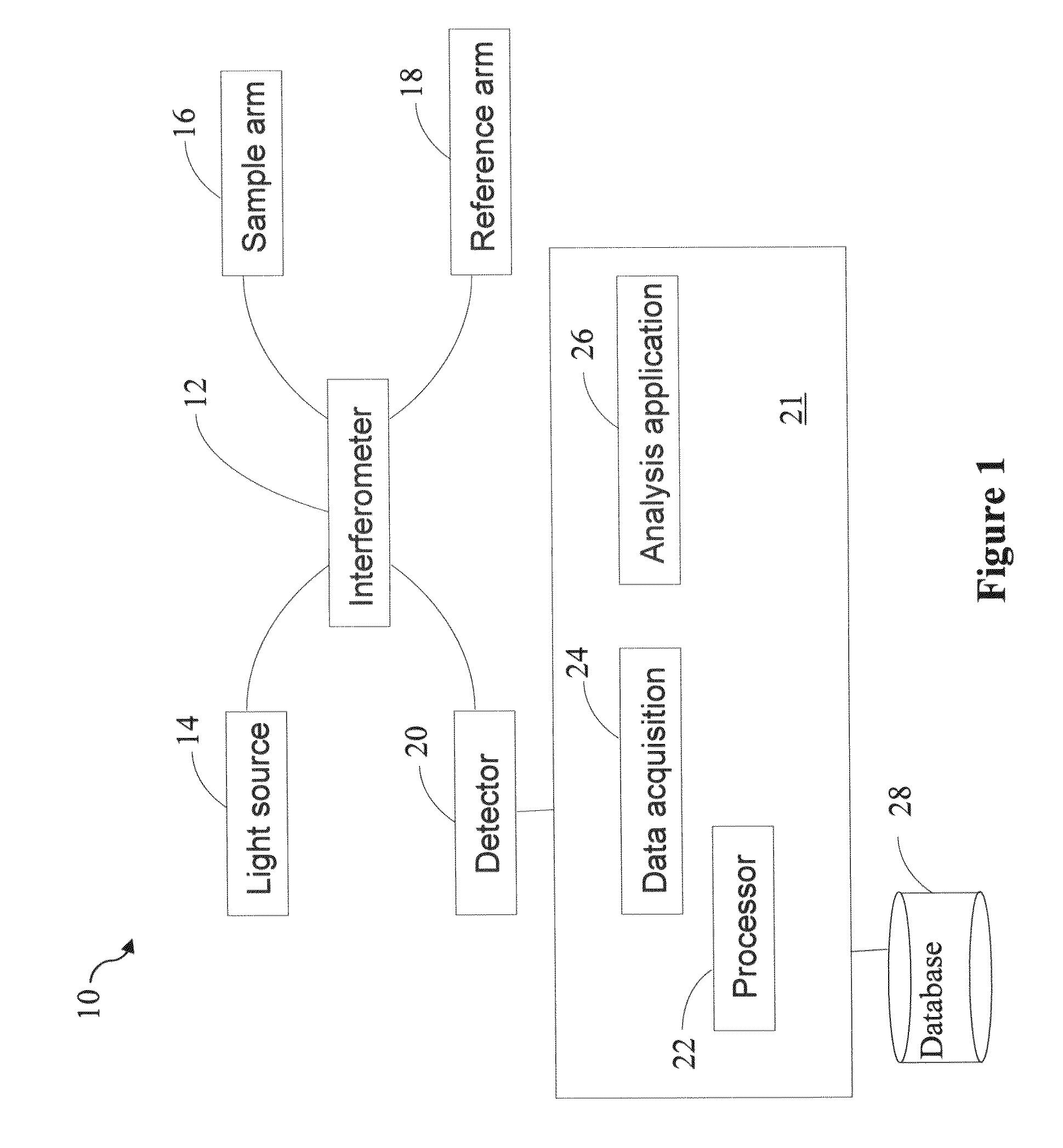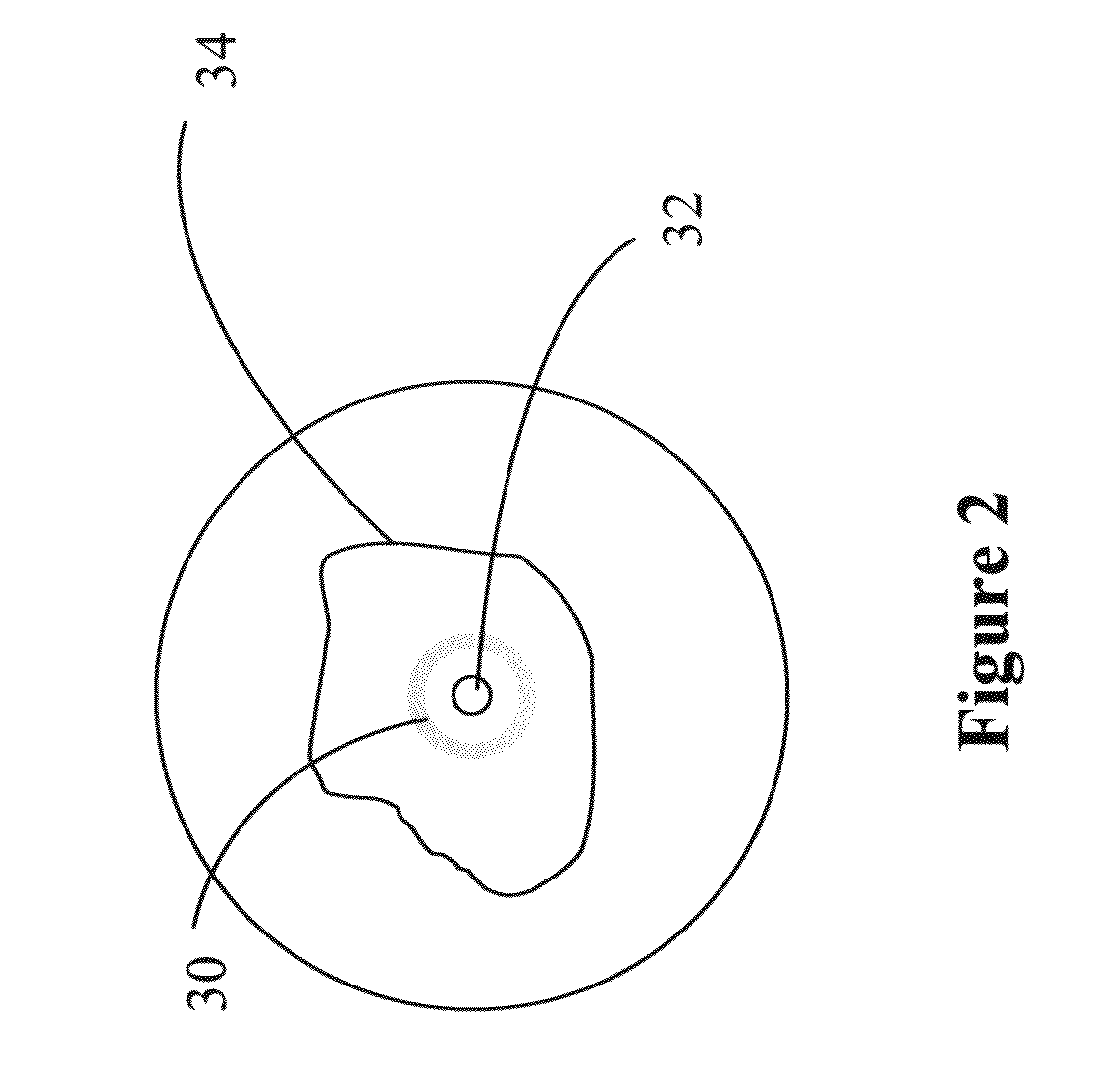Quantitative methods for obtaining tissue characteristics from optical coherence tomography images
a tomography image and optical coherence technology, applied in the field of tissue characterization using optical coherence tomography, can solve the problems that small changes in optical properties that influence the oct signal cannot be readily discerned, and may occur errors in analysis, so as to improve tissue type classification
- Summary
- Abstract
- Description
- Claims
- Application Information
AI Technical Summary
Benefits of technology
Problems solved by technology
Method used
Image
Examples
Embodiment Construction
[0044]The following description refers to the accompanying drawings that illustrate certain embodiments of the invention. Other embodiments are possible and modifications may be made to the embodiments without departing from the spirit and scope of the invention. Therefore, the following detailed description is not meant to limit the invention. Rather, the scope of the invention is defined by the appended claims.
[0045]In general, the invention relates to methods for tissue characterization of vessel walls using optical methods based on what is generally termed low coherence interferometry (LCI), such as, but not limited to optical coherence tomography (OCT) whether in the time or Fourier domain. The methods described herein solve the problems encountered in semi-automatic or automatic tissue characterization application such as optical calibration, artifact removal, generating accurate optical and spatial parameter measurement from regions of interests, tissue segmentations, and sta...
PUM
 Login to View More
Login to View More Abstract
Description
Claims
Application Information
 Login to View More
Login to View More - R&D
- Intellectual Property
- Life Sciences
- Materials
- Tech Scout
- Unparalleled Data Quality
- Higher Quality Content
- 60% Fewer Hallucinations
Browse by: Latest US Patents, China's latest patents, Technical Efficacy Thesaurus, Application Domain, Technology Topic, Popular Technical Reports.
© 2025 PatSnap. All rights reserved.Legal|Privacy policy|Modern Slavery Act Transparency Statement|Sitemap|About US| Contact US: help@patsnap.com



